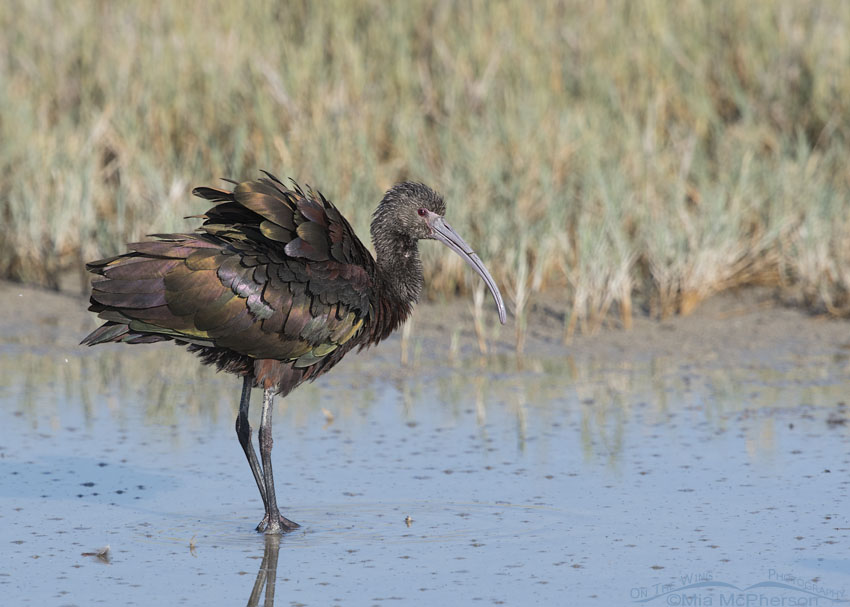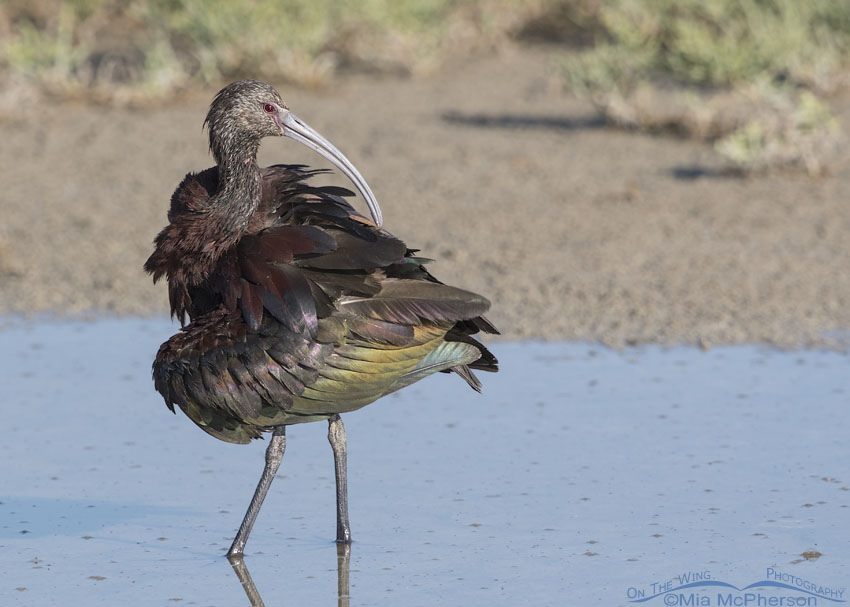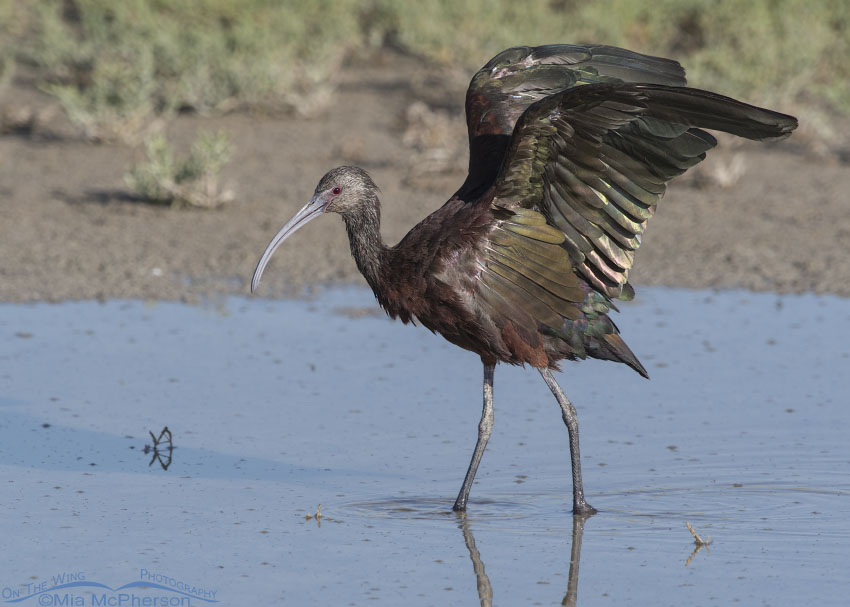Bear River Migratory Bird Refuge was calling me yesterday morning and I answered that call and photographed several White-faced Ibis from the auto tour route.
 White-faced Ibis settling its feathers – Nikon D500, f7.1, 1/1250, ISO 400, Nikkor 500mm VR with 1.4x TC, natural light
White-faced Ibis settling its feathers – Nikon D500, f7.1, 1/1250, ISO 400, Nikkor 500mm VR with 1.4x TC, natural light
White-faced Ibis may look brown from a distance but when the sunlight hits them just right it exposes a rainbow of colors in their plumage.
 Preening adult White-faced Ibis – Nikon D500, f7.1, 1/1000, ISO 400, Nikkor 500mm VR with 1.4x TC, natural light
Preening adult White-faced Ibis – Nikon D500, f7.1, 1/1000, ISO 400, Nikkor 500mm VR with 1.4x TC, natural light
The White-faced Ibis at the refuge are no longer in their breeding plumage and they lack the white markings on their faces but they are still quite colorful. I wanted to share this photo because I can see a heart shape in it, can you?
White-faced Ibis are here in large numbers during the summer.
It is believed that we have the largest breeding population of this species out in the marshes of the Great Salt Lake and I have to say that sometimes the skies here are filled with them early in the morning as they make their way to their feeding grounds.
Their calls remind me of an “oink” but AllAboutBirds.org describes the sound as a nasal moaning “urm”. Have a listen here.
 White-faced Ibis wing lift – Nikon D500, f8, 1/1250, ISO 400, Nikkor 500mm VR with 1.4x TC, natural light
White-faced Ibis wing lift – Nikon D500, f8, 1/1250, ISO 400, Nikkor 500mm VR with 1.4x TC, natural light
The group of White-faced Ibis I photographed yesterday were pretty cooperative, normally I get photos of their tails as they fly away.
I’m always happy to photograph White-faced Ibis when they are here in Utah or when I am up in Montana. They aren’t here year round and I actually miss them, their curved bills, their odd calls and their colorful plumage when they are gone.
Life is good.
Mia
Click here to see more of my White-faced Ibis photos plus facts and information about this species.


Love those colours. The rewards that are there for those of us who open our eyes (and hearts and minds) is incredible.
“…when the sunlight hits them just right, it exposes a rainbow of colors in their plumage.”
I love that and lovely images. It happens with redtails, Harris’ hawks and Kestrels, too. Did you know that the brown on a redtail contains violet hues? VIOLET? Who’da thunk THAT! How outrageous!
Life IS good!
Those feathers look almost metalic…like heat treated copper….Beautiful bird!!!
Nice photos, I usually get them with there heads stuck in the mud.
I agree, it sounds like an oink.
Hi Mia, I’m new to your blog and was so pleased to see one of my all time favorite birds so nicely documented on day one. Lovely way to start the day. Thank you!
A very interesting looking bird!